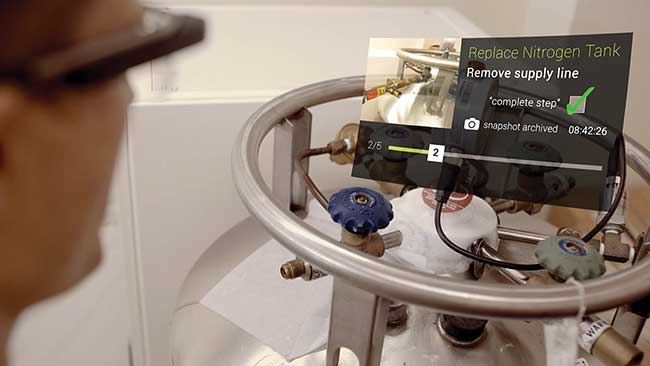
Wearables for Work
Transparent and “see-around” displays are turning up in a wider array of work settings thanks to lighter-weight designs, improved contrast and longer battery life.
 While consumer goods such as smart watches and glasses attract attention, demand for wearable computing devices for enterprise, industrial and professional applications is also growing. Because such devices are connected computers, they enable users to carry a PC or tablet around while interacting with it hands-free. Therefore, they could benefit factory and logistics workers who need real-time data but cannot readily consult a tablet. Medical professionals and maintenance personnel could likewise use the information a wearable provides.
While consumer goods such as smart watches and glasses attract attention, demand for wearable computing devices for enterprise, industrial and professional applications is also growing. Because such devices are connected computers, they enable users to carry a PC or tablet around while interacting with it hands-free. Therefore, they could benefit factory and logistics workers who need real-time data but cannot readily consult a tablet. Medical professionals and maintenance personnel could likewise use the information a wearable provides.
“We expect wearables to have a strong presence within certain industries [such as] field services, logistics, maintenance and energy industries. These are primarily desk-less workers,” said James Moar, a senior analyst with Basingstoke, England-based Juniper Research Ltd.
Resolution, size trade-offs
Such industrial and professional wearables, however, need suitable displays and may have to work in cold, hot, noisy, dirty and possibly water-logged environments while being comfortable, offering value and providing performance. If a display is involved — which is likely to be the case in a professional or industrial setting — it will impact its specifications.
“We believe display resolution should be just adequate for the applications since a higher-resolution display and larger field of view typically require a bigger size, higher power consumption and higher cost. A smaller display module with low power consumption will allow the headset to be smaller, more fashionable and comfortable,” said Hong Choi, chief technology officer for display maker Kopin Corp. of Westborough, Mass.
The company provides microdisplays, display modules, chips and software to a variety of enterprise wearable manufacturers. In such settings, increasing worker productivity is of paramount importance, which usually means that operation must be hands-free. The best input option is voice, but often the environment can be quite noisy, Choi said. Thus, Kopin offers its own technology, which Choi said has a better than 95 percent speech-recognition reliability, even in noisy industrial applications.
Member Exclusive: To read the complete article, please Login or Register
Published: September 2017